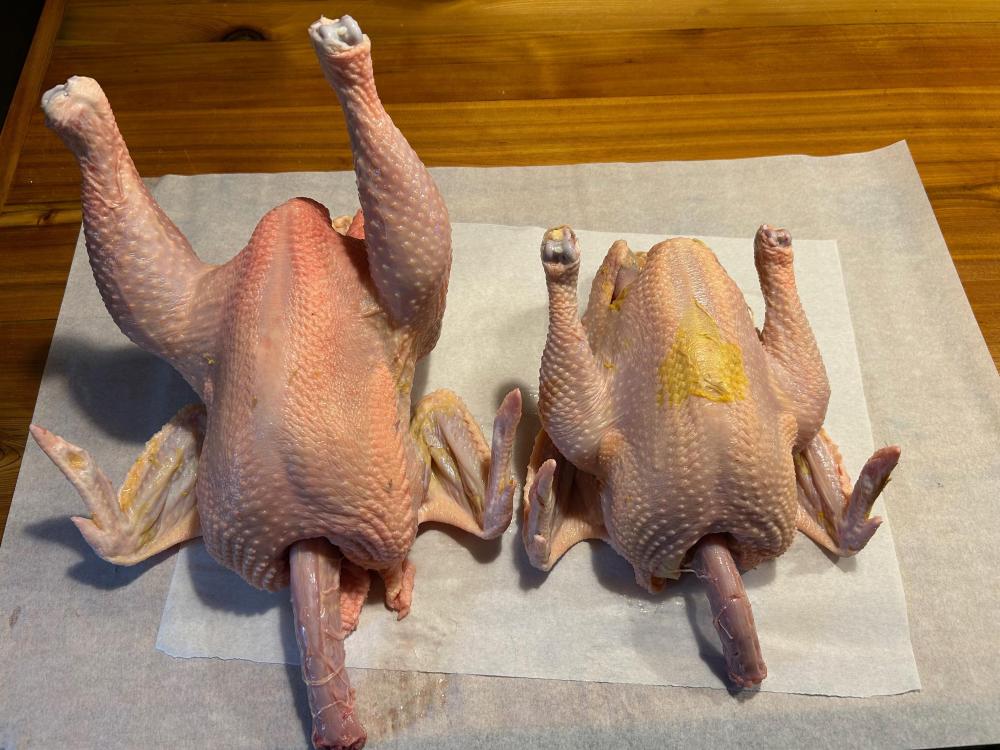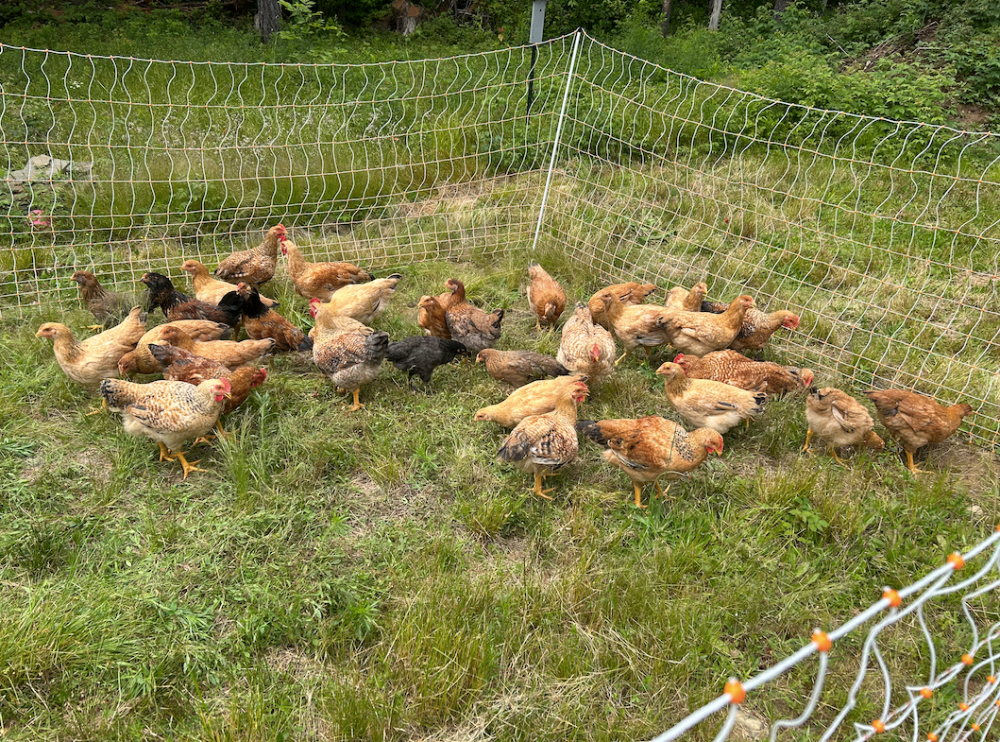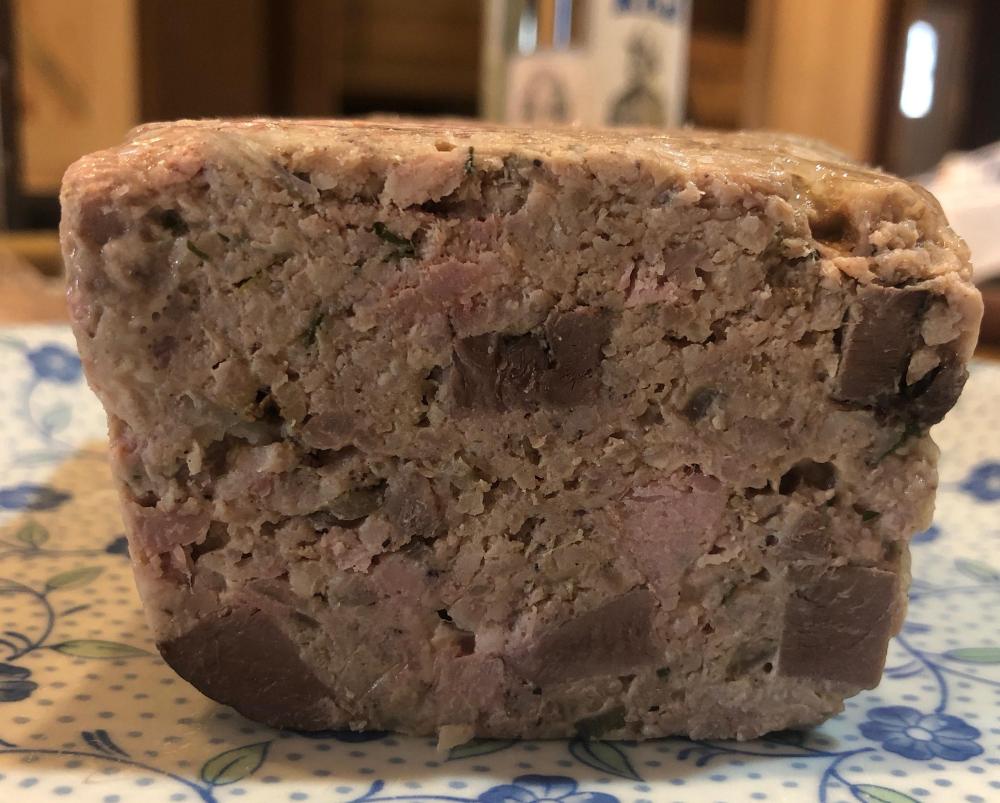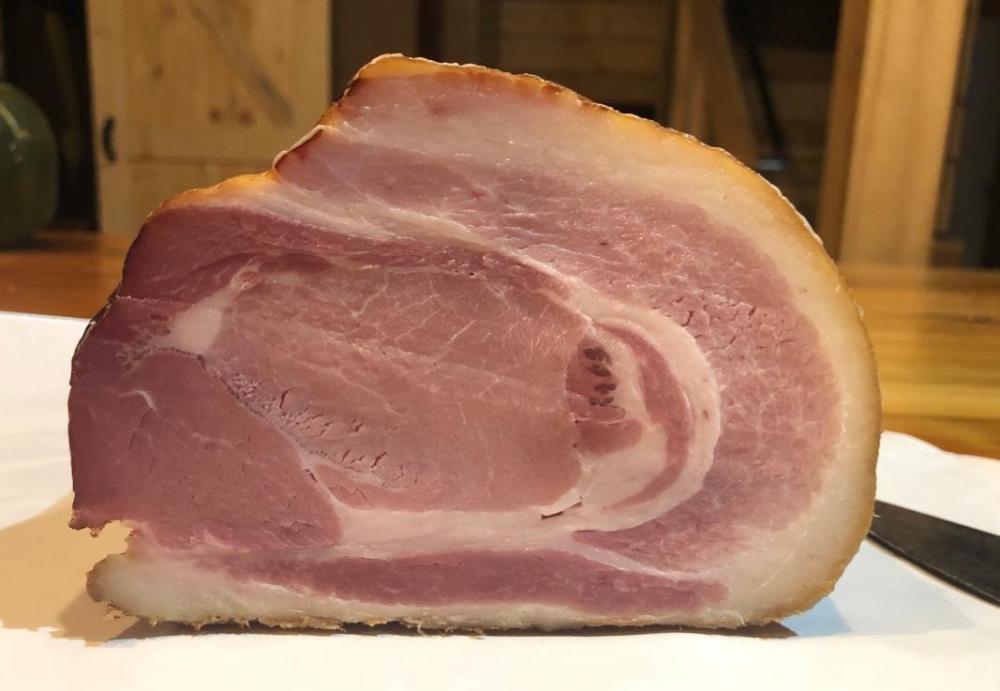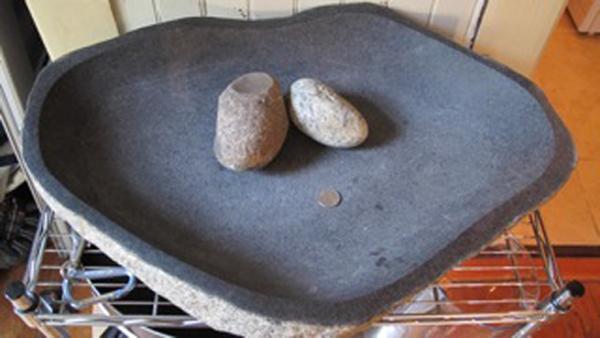
Raw/Cooked
participating member-
Posts
37 -
Joined
-
Last visited
Content Type
Profiles
Forums
Store
Help Articles
Everything posted by Raw/Cooked
-
Thanks! We use a plucker, but some hand work is required to get every last feather.
-
Definitely a good idea. There is no reason to pay for USDA inspection if you are buying a whole or half animal. Inspection is only required if the farmer wants to sell individual retail cuts. Fractional carcass sales are exempt. This kind of USDA inspection has nothing to do with meat quality. It is purely a food safety inspection and the inspectors are from the USDA Food Safety and Inspection Service (FSIS). Quality grading is done by a different USDA division, its Agricultural Marketing Service (AMS). In my experience small processors generally don't offer grading. Price-wise I think you did great! It is expensive and a heck of a lot of work to raise quality animals in the most humane manner. You did right by not buying an indoor-raised hog. Pigs need room to root, forage, and run (they are surprisingly fast).
-
We processed our Sasso chickens about a month ago, and I am extremely happy with them from both a husbandry and a culinary perspective. The birds were all between 3-5 lbs (5 lb rooster on left, 3ish lb hen on right), and had abundant yellow fat that rendered into a deep golden schmalz. They are delicious. Even Cornish cross (standard, big breasted meat chicken) birds that forage and are raised on grass have great flavor, these are next-level. They are more satisfying to raise than Cornish crosses as they are very active and actually act like chickens. Their more upright posture and body shape also means they don't drag themselves around in the dirt, which keeps the scalding water relatively clean. We will definitely raise these again next year.
- 91 replies
-
- 13
-

-
We've been raising Freedom Ranger chickens for a number of years now. I learned about Sasso chickens reading this thread, and when I went to place my chick order this spring, saw that they were available. They're beautiful birds and are growing very nicely. These are about 8 weeks old, and we'll let them go another 4 weeks, aiming for a dressed bird at 3-5 lbs. There are a few Araucanas in the mix that we hatched around the same time the Sasso chicks arrived. We'll add those to our laying flock when they get a little larger.
- 91 replies
-
- 13
-

-

-
I wonder if sourcing is an issue? From a producer's standpoint, it can be really difficult to make the financials of wholesaling work, unless you're farming at a certain level of scale (100's of hogs).
-
I think this is more an issue of writing than an actual slip up. The rule was proposed in 1969, but not implemented until 1971, which the author mentions in the first paragraph. It would have been much clearer had he kept things in sequence!
-
@blue_dolphin, your paté is gorgeous!
-
Pork pâté: the forcemeat is 2/3 belly and sirloin, 1/3 liver. Garnishes are braised heart and tongue, and diced gammon. I marinated the meat and liver in cognac, allspice, ginger, nutmeg, lots of white and black pepper before grinding. 1/3 of the meat was ground with a 3mm plate, remainder and liver with a 1mm plate. Other additions include shallots, parsley,egg, cream, and flour. I made 4 of these in 15x7cm molds. This one is a little lopsided as my pressing weight shifted.
-
I work with a number of small livestock farmers in northern NY, and some of the prices that are being posted here for industrial meat exceed those asked by these small farms, all of whom raise their animals on pasture and with great care. A lot of these farmers have had a banner year-plus as pandemic-related supply chain issues and commercial meat price spikes sent folks to local meat sources. Some of them want to expand their operations but are hamstrung by a lack of processing infrastructure. I agree with Paul o'Vendange in that we'd all be much better off if everyone could eat meat raised locally, humanely, and in an environmentally sensitive manner. Sadly, we are a loooooong way off from that being a reality.
-
-
With our high of 17 degrees (F) reached early this morning, I thought it a good day to make Tourtiere du Lac St. Jean. Chunks of pork, venison, grouse, and potatoes in a lard crust.
-
It is a lot! We feed organic and like most things the cost of feed took a jump this year. I also slaughter at @ 9-10 months so we need to feed them a little longer than is typical We don't market our pigs. My wife is one of six kids, and each of her siblings has a decently sized family, so we do this strictly as a family affair (they help with costs and some labor). If I could slaughter on-farm and sell, I might think differently about it. Gloucester Old Spots have fantastic meat, but the fat is prodigious! GOS are lard hogs and it's a little overwhelming.
-
Beautiful chops, @Margaret Pilgrim! I share your (and others) preference for Berkshire pork, though I am biased as my wife and I raise Berkshire/Gloucester Old Spot cross hogs. Over the last decade we have rotated other breeds into our farm (Large Black, Tamworth, Yorkshire, Duroc, and mixes of these) and we find that we definitely prefer the Berkshire and Berk crosses. While there are definitely breed differences, for example the deep redness of Berkshire meat, how the pigs are raised has a huge impact on their deliciousness. This year we had a couple Yorkshire/Duroc crosses (like those that Llano Seco raise). This is a standard commercial hog that grows longer and leaner than most "heritage" breeds, the "other white meat" kind of pig. They turned out great, full of flavor, juicy, beautiful color, and with a decent amount of fat. To put the cost of this kind of pork into perspective, this year it cost us @ $4/ pound just to feed our pigs from weaning to market weight. That's not counting labor or other costs like bedding or replacing old fencing. It is expensive and labor intensive to raise quality meat, and while I certainly understand that it is not affordable for many, I am heartened to see folks who can afford to do so choose to purchase non-industrial pork.
-
The English version is https://villagecookingkerala.com/
-
Try this site: Village Cooking Kerala
-
I slaughtered one of our hogs Friday afternoon and this morning salted around 40# of noix de jambon, which I first became aware of here on eGullet through @DiggingDogFarm several years ago. I have modified the process as some in my family did not care for the light cure and smoke, and soft texture of the traditional method. No Gascon would recognize these as noix de jambon, so we simply call them ham nuts. These are cured longer and get a heavier smoke, and are like a less intense country ham.
-
Homemade tempeh is for sure an entirely different product than the gross, waxy, and bitter slabs you buy at the store. It's been a couple of years since I have made it, but I used to do so regularly. The person who taught me how to make it stressed two things: undercook the beans slightly, and don't make the cake too thick. 1/2 to 3/4 of an inch is ideal.
-
The etymology of the word "tofu" is interesting, considering that fresh tofu is not a fermented product. I wonder if in the past, tofu was fermented post-production as a matter of course to preserve it?
-
Those are the small bags of flour. For bakeries, you're talking 100lb bags. Yeast comes in 25-50 lb sacks. Some bakeries sure, but certainly not all. A good-sized bakery that I used to do business with (they make 1000 dozen bagels per day) buys flour exclusively in 50lb sacks because that's the only way the mill packages it. This is a trivial point though, and frankly a tad pedantic. I was simply making the point that if you work in the food business, be you a line cook, baker, bartender or dishwasher, you are lifitng heavy things every day. I have no interest in arguing who works hardest or whose job requires supreme physical effort. We'd need to look outside of restaurants and bakeries if we want to argue those points.
-
I think the title of this thread is a little misleading. It seems to me that the author of the NY Times article was not trying to argue that chefs are as tough as elite athletes or have the same level of conditioning or fitness. The basis for the comparison is that they are both physically demanding professions that can only be worked at for a limited number of years before wear and tear on the body takes its toll. As Annabelle and Celeste pointed out, this is true for any number of manual labor professions. A good buddy of mine is an arborist on the cusp of 50. His Dr. just told him that he'll need to stop working pronto because of the nerve damage in his hands and arms. I think there are a number of things about restaurant work though that do make its physical challenges different than other manual labor jobs. I grew up in the restaurant business and cooked professionally for close to 20 years before switching careers. Physical issues were definitely factors that spurred my career change. The hours are the first thing that springs to mind. 10-12 hour shifts (frequently more) were the norm in the kitchens I worked in. 60+ hour weeks are common in the industry. Working 6 days a week, or many days in a row without a day off are also common. I have many friends in the building trades and the vast majority of them work 40 hour weeks. The only time any of these guys work 6 days a week is if they choose to pick up a side job on the weekend. None of them have ever worked 10, 12, 14 days in a row without a day off. You are generally also spending the entirety of your kitchen shift on your feet, often on a hard tile or concrete floor: not all kitchens provide mats for employees to stand on. Unlike my contractor buddies, kitchen workers generally do not get to sit and take a 1/2 hour lunch break mid shift. Ditto morning and afternoon breaks. Additionally, and this is especially true for line cooks, all of this standing is done in one place. You might need to go to the walk-in or dry storage, but generally you're stuck at your station with little chance to move around other than bending to reach into a low boy and twisting between the range and the pass. Lifting heavy things is also a daily part of the job. The comparison between cooks and bakers was made upthread. Yes, flour comes in 50lb bags, but so do potatoes, onions, carrots, turnips, cabbages, etc. Meat comes in 80lb cases. I worked my way through college and my first year of graduate school in a high volume barbecue restaurant. Thursday, Friday, and Saturday mornings I'd prep 3 cases of pork butt, 4 cases of ribs, 4 cases of brisket and 100 chickens. That's nearly 1,000 lbs of meat that I'd move (by myself) from the walk-in to the kitchen and finally into the pits. The frenetic pace of restaurant work also causes cooks to try to minimize trips, so carrying big loads is the norm. I can't count how many times I have seen line cooks pile a sheet tray with full 1/6 pans of mise en place and hustle it into the walk-in. Along with the heavy lifting comes constant fine-motor repetitive motions. Celeste made the point that kitchen implements aren't heavy. That's true, but while a pair of tongs may only weigh 6 oz. or so, squeezing them 100s of times a day every day for years on end is a perfect recipe for repetitive motion injuries. Same thing with knife work, or shaping bread and pastry. These tasks may not require brute force, but the constant repetition of specific movements can cause serious and painful injury. I suffered bilateral carpal tunnel syndrome that thankfully improved once I stopped cooking professionally. To answer your questions Mitch, yes I absolutely agree with the author's premise that cooks have a finite number of years in which they will be physically able to do the job. As I mentioned above, I cooked professionally for a hair under 20 years. To heck with the golden years, it was the thought of not being able to get out of bed in my late 40s that motivated me to get out of the kitchen!
-
Sorry, no American conspiracy to deny international readers the dimensions of my mortar was afoot. The quarter was simply what I had in my pocket when I took a quick photo. The mortar's dimensions are 56 x 42 cm and @ 8cm deep.
-
A buddy of mine who is a talented stone sculptor recently gifted me this mortar made out of Adirondack gabbro. The little dot in the bowl is a US quarter for scale. Mkayahara, this was raw stone as your mortar appears to be. I ground a bunch of rice in it to smooth it a bit, but otherwise haven't seasoned it. The gabbro is very dense and hasn't yet picked up any stains or lingering odors.
-
Pâtés & Terrines by Ehlert et al. is a great (and beautiful) book though out of print. It's worth tracking down a used copy.
-
I can get behind "archevore," especially after reading Harris' rationale. His blog post "Paleo 2.0" is very informative. As far as (pre) historical accuracy is concerned, of course people (myself included) don't eat this way because of a desire to replicate a past lifestyle. I have had great success with weight loss, and some pretty amazing gains (for me) in athletic performance by eating basically how Harris advocates. However, the folks who market the Paleo Diet (Cordain, et al) do so by relying heavily on making linkages between diet and evolutionary history. As Harris points out, they got a lot of it wrong (see the Paleo 2.0 post referenced above). I don't think there's anything wrong with looking critically at these inaccuracies. Back to Lora's question, I also use a lot of sweet potatoes as a filler, mostly baked or roasted. Greens really are the filler in my diet, both raw and cooked. I like to cut collard greens into julienne to use like noodles. I make something like the cauliflower rice mentioned up-thread by shaving thin slices of cauliflower floret and then crumbling the slices. It's more like cous cous than rice and very good sauteed in butter or bacon fat. I suppose you could steam it if you wanted something more neutral as a base for something spicy.
-
I'm an archaeologist by profession, and the name makes me cringe too. I wouldn't be surprised if starchy wild tubers also made up a significant part of paleolithic diets, something forbidden on the modern plan. You are absolutely right about the probable reliance on bugs, eggs, and microfauna as protein sources. Not to be pedantic, but your assumption about the reliability of paleolithic hunting is incorrect. There is actually quite a bit of evidence that paleolithic humans (and Neanderthals for that matter) were very effective hunters of large game, and in some cases were successful enough to hunt selectively. If paleolithic people were fitter than their modern counterparts, its probably because of the daily strenuous physical activity their lives required. Its likely they lived with an almost constant caloric deficit.

